Contents
six Essential concepts for Kiln Maintenance
[wpecpp name=”package + Updates forever” price=”250″ align=”center”]
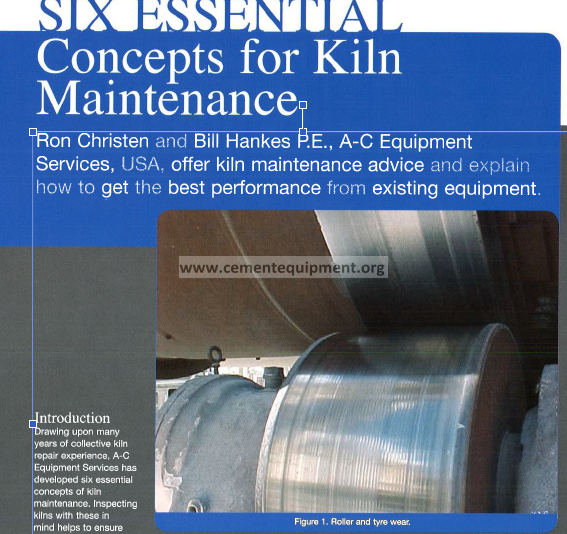

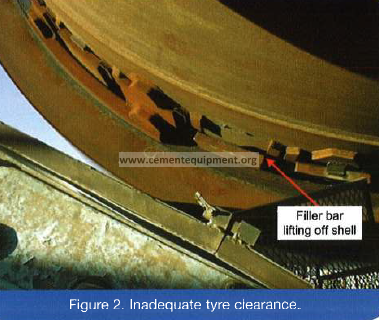
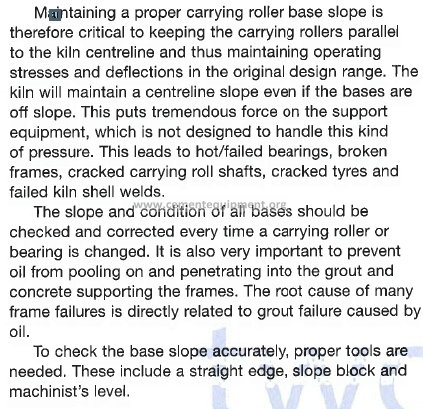
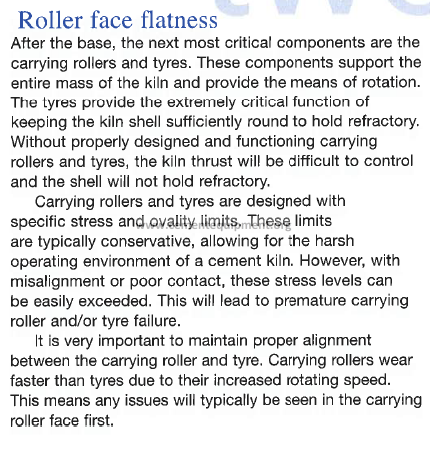
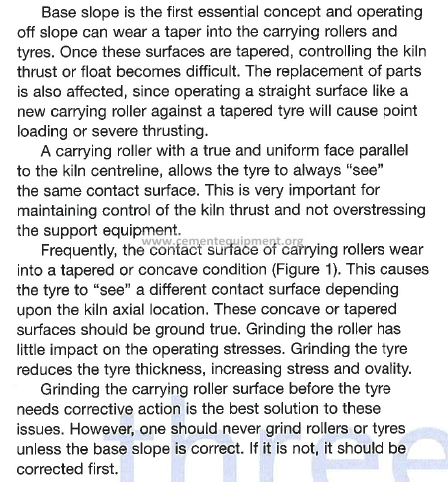
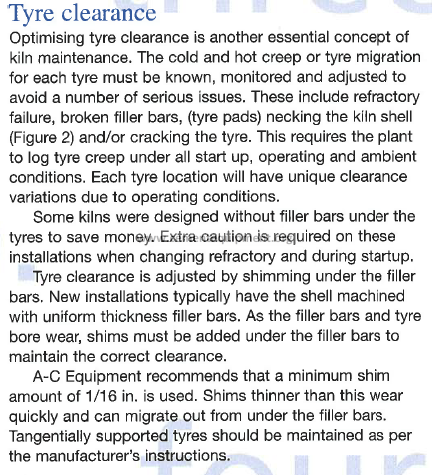
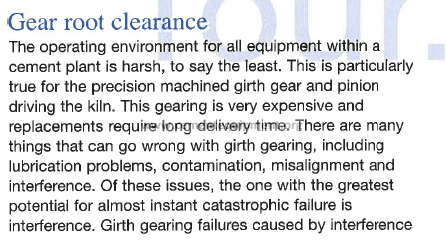
typically take the form of top land roll-over, tooth profile distress, pinion shaft breakage and/or gear rim breakage. A gear rim or pinion shaft failure could mean an extended
downtime if no spares exist.
All gearing requires clearance between the teeth to mesh properly. This clearance is typically measured
as backlash or tip-to-root distance (Figure 3). These two items are physically related so if the backlash is
increased, root clearance also has to increase. Extra clearance is always part of the installation procedure
for a girth gear set on a kiln to ensure interference does not occur. Backlash is used for new gearing only. Once
the gearing is worn, set-up is based on tip-to-root clearances, contact and pitch line separation.
Root clearance is a nominal value since tooth root diameters are not a specifically controlled
manufacturing dimension. Different gear manufacturing processes yield different root diameters for the same
tooth size. Manufacturing variances also impact the actual final root diameter of gearing.
It is recommended that root clearance measurements are taken at four locations at least once a year. A current
and correct root clearance value will provide information to assure that any kiln movements made during an
alignment position the kiln for maximum gear life. An easy way to monitor root clearances is by
inspecting the pitch lines on the side of the gear and pinion.
Kiln thrust alignment
Kiln thrust alignment is based on the principle that each roller must be very close to parallel with the kiln
centreline. In this position, each roller has an equal reaction to kiln thrust.
It is important to note that kiln thrust can change during normal kiln operation. Some reasons for this
include:
• Coating or rings can form increasing load, and then fall out decreasing load.
• Shells bow or “dog-leg” due to hot spots caused by refractory failure or uneven internal coatings.
• Tyre position changes on uneven roll face.
• Dust or loads can change tyre-to-roller contact face
friction.
• Roller base slope changes.
• Kiln centreline alignment changes.
• Process variables change.
In most cases, process variables and the weather are beyond the operator’s control. In order to maintain
correct kiln thrust, one has to ensure that the surfaces the tyres ride on are very consistent. That means the
base has to be on a slope, the roller face has to be flat and the roller axis has to be parallel to the kiln centreline.
Maintaining correct thrust is made significantly easier if one is careful to maintain these variables. It
is important to remember that kiln thrust is not about the position of the kiln, but is all about each roller’s
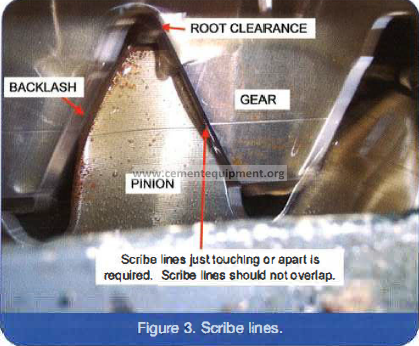
relationship to the kiln. Some kilns do not have uphill thrust rollers. On those, it is critical to maintain downhill
thrust.
Kiln centreline alignment
Kiln centreline alignment can be viewed from many perspectives. The most common view is that of a perfectly
straight tube that would minimise the shell stresses and the horsepower required. However, a perfect alignment
such as this would do nothing to compensate for the unbalanced and ever changing load from pier to pier.
A maximum misalignment parameter has to be established for each kiln so that “intelligent misalignment”
can be utilised to accommodate operational and design load issues. This can only be accomplished by combining
the information gathered through shell alignment measurements, shell ovality measurements, a visual
inspection of the kiln mechanical components and an understanding of the kiln maintenance history. When
approached from the proper perspective, a kiln alignment programme will become an effective tool in minimising kiln
problems.
Conclusion
Decades of kiln service have led to the development of the six essential concepts of kiln maintenance. These six
items are things that can be maintained and controlled without affecting operation or extending shutdown time .
They are critical to successful long term kiln operation. In summary they are:
• Check and correct carrying roll base
slope.
• Maintain flat carrying roll faces.
• Optimise tyre clearance.
• Check gear root clearance.
• Adjust kiln thrust alignment.
• Adjust kiln centreline alignment.
A maintenance programme that incorporates these six essential concepts will experience far lower operating costs and less unplanned shutdowns